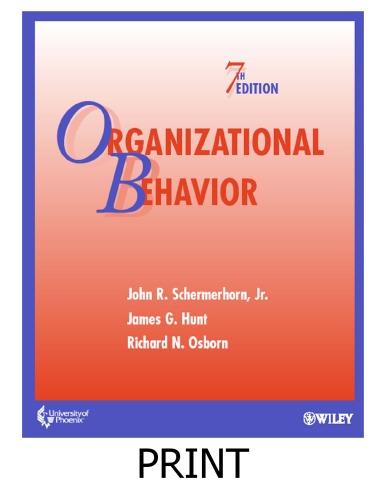This case study is based on the experiences of Angelica Garza, a woman of Mexican-American heritage who
Question:
This case study is based on the experiences of Angelica Garza, a woman of Mexican-American heritage who worked for 10 years in the Human Resource (HR) function of a multinational medical products company. This maquiladora plant was in Tijuana, Baja California, a large city directly across the U.S.-Mexican border from San Diego, California. Maquiladoras are manufacturing plants owned by foreign capital in the regions of Mexico bordering the United States, which have been set up to take advantage of favorable laws and cheap labor.
The Tijuana plant was one of a number of operations for USMed. Six other U.S. facilities were located in the Northeast, the Midwest, and Florida. In addition to her work in the manufacturing plant, where Angelica spent most of her time, she was also responsible for human resources for the small, primarily administrative facility in Chula Vista, on the U.S. side of the border. Eventually, there were 34 Americans—12 on the Mexican side and 22 on the United States side— and approximately 1100 Mexican nationals on the payroll. There was little connection between Angelica and the HR managers at the other USMed plants, either in the United States or abroad. Angelica reported that USMed had no overall policy or strategy for dealing with human resources generally and diversity specifically. The transition in Mexico was not a smooth one for Angelica. Nothing in her U.S. experience had prepared her for what she encountered in Mexico. Her Anglo colleagues had only vague knowledge about the operation in Tijuana and had little interest in understanding or relating to the Mexican workforce. Given her Hispanic upbringing in the United States, Angelica had some understanding of the culture and values of the Mexican employees. Her Spanish-speaking skills also enabled her to understand and relate to the workers. Although she had some understanding of the workers, however, the assumption on the part of U.S. management that her knowledge and connection to the Mexican workers was seamless was false. There were many aspects of cultural differences between herself and the Mexican employees that the Anglo managers were unaware of: In retrospect now, I can look back and [I’m] just amazed at what I was involved in at the time. I mean, I didn’t have a clue. One of the things you find is that [people assume that Mexican Americans are most suited to work with Mexicans.] I guess just because I was of MexicanAmerican descent, it was like I would just know how to mingle with this total[ly] different culture. As a result, Angelica experienced a great deal of frustration and misunderstanding. Her attempts to intercede between the management in Mexico and that in the United States often led to her disenfranchisement from her American colleagues, who did not value or appreciate her ideas or suggestions. Further complicating her experience in Mexico was the mixed reactions she engendered from the Mexican nationals. Because of her American status, Angelica was misunderstood and sometimes resented by Mexican employees and, at the same time, she lacked support from the U.S. organization. I found that the Mexican women who were there [two women in accounting who were Mexican nationals, and had been there for about 5 years] were resentful. My saving grace was that I was an American because the Mexican women there looked at the Americans as being like a step above or whatever. And there was resentment of me coming in and taking away jobs. They perceived it as: They weren’t doing a good job and we were coming in and taking responsibilities away from them. So me being a woman coming in, I was scrutinized by the two women who had been there. I couldn’t get information from them. They gave me the least information or help they could and would be critical of anything I did once I took it from them. You know, I look back and it was probably pretty frightening for them [the Mexican nationals] too, because we all came in and we knew what we had to do; [USMed was] very straightforward about, you know, you fail to do this and you can lose your job and you’ve got to do that or you could lose your job, so getting them to follow these protocols and these operating procedures was very difficult. Change is difficult anyway but getting them to follow some of those rules [was] real challenging.
Review Questions
1. What competencies are appropriate to ensure greater effectiveness of U.S. employees operating in a maquiladora or other nonU.S. organization?
2. What are some of the costs of not understanding diversity? What could the organization have gained by approaching the plant with greater cultural understanding?
3. From the HR perspective, what were the unique challenges that Angelica faced at various points in her work for USMed?
4. Angelica worked in a plant outside the United States. What do her experiences and perspectives tell us that applies to domestic operations?
Step by Step Answer:

Organizational Behavior
ISBN: 9780470076255
7th Edition
Authors: John Schermerhorn, James G. Hunt, Richard N. Osborn





